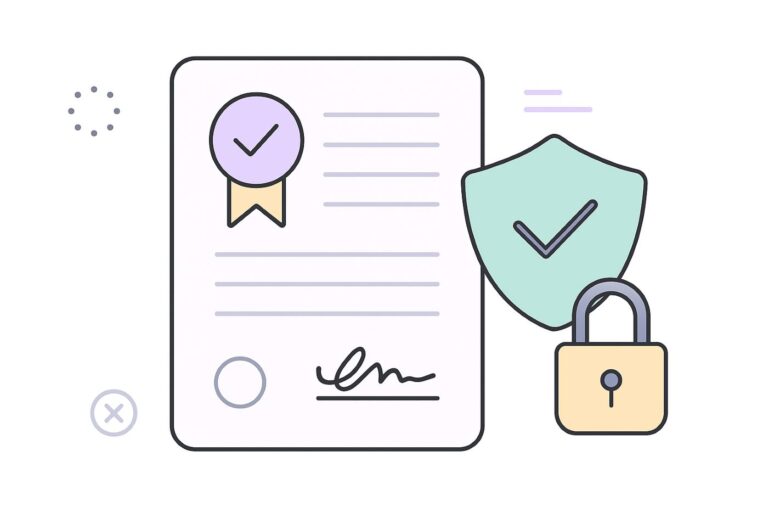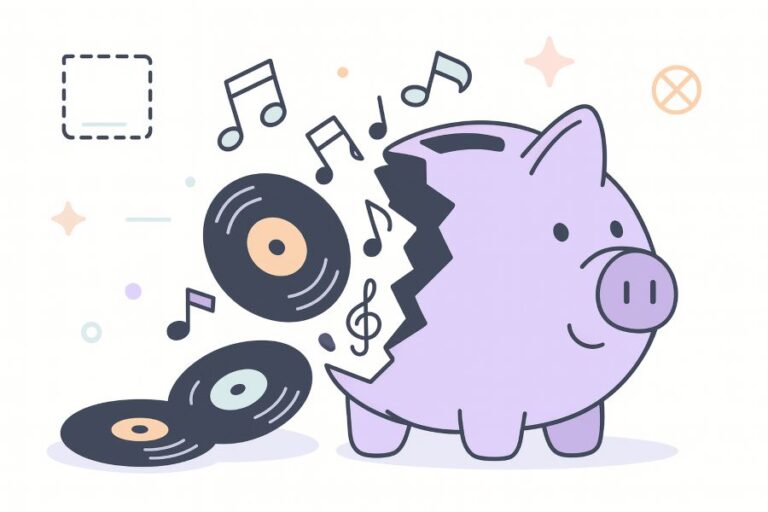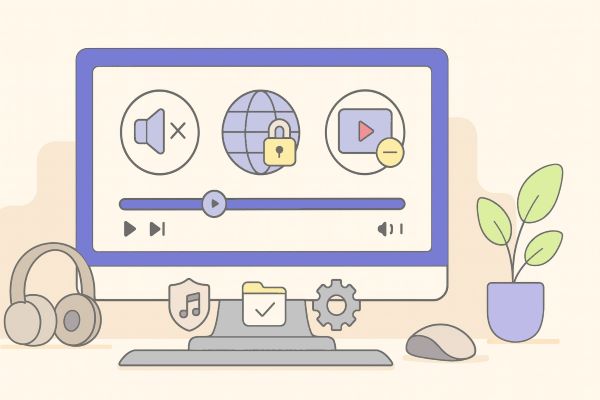Buy Music License: Costs, Rights, and How to Avoid Hidden Fees
Audiodrome is a royalty-free music platform designed specifically for content creators who need affordable, high-quality background music for videos, podcasts, social media, and commercial projects. Unlike subscription-only services, Audiodrome offers both free tracks and simple one-time licensing with full commercial rights, including DMCA-safe use on YouTube, Instagram, and TikTok. All music is original, professionally produced, and PRO-free, ensuring zero copyright claims. It’s ideal for YouTubers, freelancers, marketers, and anyone looking for budget-friendly audio that’s safe to monetize.
Creators, marketers, agencies, and SMBs: here’s your clear guide to music license cost. Learn what drives price, choose the right model, budget with contingencies, and dodge surprise fees.
Who This Guide Is For (And What You’ll Learn)
If you create videos, run campaigns, or ship apps, this guide is for you – creators, marketers, agencies, and SMBs who need clear numbers for music. We’ll show what you pay and why.
You’ll learn every cost driver: usage, audience size, term, territory, platforms, edits, and exclusivity. You will match use cases to pricing models (royalty-free, per-use, blanket, custom) and know when each makes sense.
You’ll build a realistic budget with cushions for revisions and add-ons, spot red flags, and avoid surprise fees. Use this as practical guidance only – it’s information, not legal or financial advice.
Quick Primer: What You’re Actually Buying
When you license music, you buy a specific, time-boxed right to use a song in a defined way.
Permission, Not Ownership
A license permits you, not ownership. The songwriter and label keep their rights; you get a defined right to use the music. Think of it like renting a capability with rules you must follow, not buying property.
Those rules cover use cases, platforms, audience size, territory, term, and versions. They can limit edits, cutdowns, languages, and boosts. New uses, longer runs, or added platforms usually require an upgrade, an add-on, or a fresh license.

Keep proof of permission: license certificate, track ID, invoice, and any emails that clarify the scope. Store them with your project files so teams can verify rights later, during renewals, audits, takedown disputes, or platform reviews.
Two Sides of Rights for Most Videos: Composition and Master
Most video needs two permissions. The composition covers the underlying song (melody and lyrics), usually managed by publishers or writers. The master covers the actual recording – performed by artists and owned by labels or libraries. You must address both.
.jpg)
Library tracks often bundle composition and master into one transaction. Commercial songs rarely do; you’ll negotiate composition with the publisher(s) and master with the label. Clearing only one leaves a legal gap that blocks release and invites claims.
In contracts, you’ll see “sync” for the composition and “master use” for the recording. Ask: who controls each side, what splits apply, and who can grant approval?
Rights Stack Overview (Where Costs Surface)
Costs surface across the rights stack. For video and most social uses, you pay a sync fee for the composition and a master fee for the recording. Price moves with scope: placement, duration, platforms, territory, and term.
Broadcast, CTV, and radio-like streams add public performance obligations. Submit cue sheets so PROs pay writers and publishers. You may not pay this fee directly, but distributors and networks require accurate reporting as a condition of airing.
Reproductions can trigger mechanical rights – downloads, discs, or app bundles. Some regions also apply neighboring rights to performers and labels for certain uses. Your actual budget depends on format, geography, and whether platforms already cover these layers.

The Big Cost Drivers
Several factors shape what you’ll actually pay for a music license, and understanding these cost drivers helps you budget realistically and avoid surprise fees.
Usage Scope
Media: Music license pricing shifts dramatically based on where and how your content appears. A track used on organic social posts costs less than one placed in paid ads, user-generated content, CTV/OTT campaigns, or national TV broadcast.
Territory: A license covering one country (say, just the U.S.) is more affordable than a multi-country regional bundle or global rights. As reach expands geographically, risk and legal exposure increase, pushing licensing costs significantly higher.
Term: Short-term campaigns lasting a few weeks or months usually cost less than annual or perpetual licenses. However, perpetual use for published content (like YouTube videos or podcasts) often makes more sense than re-licensing later.
Audience size/caps: Pricing scales with the size of your audience. Small creators may pay less, while licenses for large subscriber bases, ad impressions, or app installs cost more due to the higher reach and potential legal exposure.

Track Profile & Supply
Famous/recognizable tracks vs. production/RF catalog: Well-known or recognizable tracks by signed artists command higher fees due to strong demand and the added complexity of securing rights. By contrast, production music and royalty-free catalogs are more budget-friendly and widely accessible for commercial use.
Exclusivity: A non-exclusive license means others can use the same track. If you want exclusive rights for a time window or full buyout/work-for-hire ownership, you’ll pay more to remove competition and secure full control.
Library curation level: Boutique libraries often offer high-quality, handpicked tracks and direct support, but they charge more. Mass-market libraries offer lower-cost options with large catalogs but limited flexibility and less personalized service or legal precision.
Deliverables & Workflow
WAV/AIFF, stems/alt-mixes: Expect to pay more when you need high-quality file formats like WAV or AIFF, multitrack stems, alternate mixes, or seamless loop-ready edits. These extras improve usability across multiple platforms and media formats.
Cutdowns: If you need short versions of the same track (6, 10, 15, 30, or 60 seconds) for ads or social clips, that may raise the price. Localization packs (language or region-specific versions) add additional licensing needs.
Rush edits and custom conforming: Custom adjustments, like conforming a track to specific loudness standards, tempo (BPM), or musical key, require time and skill. These tailored services often come with rush fees or hourly billing on top of the base license.
Legal & Risk Posture
Indemnity amount and liability caps: If the license includes indemnification, check the liability caps. A higher indemnity limit means the library takes on more legal risk, which raises costs, but it also gives you stronger protection against claims or lawsuits.
Content ID/whitelisting: Licenses with fast allowlisting support (e.g., 24–72 hours for claim removal) are more valuable. Some platforms also offer pre-clearance for YouTube’s Content ID or Meta’s Rights Manager, helping creators avoid monetization loss or takedowns.
Auditability: Professional-grade licenses come with usage documentation, like sample contracts, PDF certificates, and detailed rights breakdowns. These help prove legal use during audits or disputes, providing crucial protection for advertisers, agencies, and platforms with strict compliance requirements.
Speed & Admin
Rush clearances: If you need last-minute clearances, urgent legal tweaks, or ready-to-go cue sheets, expect rush fees or minimum spend thresholds. Admin-heavy clients often negotiate upfront for guaranteed turnaround and white-glove service support.
Internal admin: Licenses that include workflow add-ons, such as procurement templates, internal approval tracking, or renewal reminders, help large teams stay compliant. That added organization comes at a cost but can prevent expensive mistakes later on.
Common Pricing Models (and When to Use Them)
Understanding music licensing costs starts with knowing how pricing models work. Choosing the wrong model can lead to overpaying or misusing rights, so it’s worth matching the model to your production rhythm, legal needs, and distribution scope.
Per-Track Fee (Needle-Drop)
The per-track model charges a set fee for each use of a track – great for projects where you know exactly what you want and don’t need volume licensing. It works best for evergreen content like brand films, documentaries, or trailers, where one song is carefully chosen and used only once. This model is ideal when creative fit matters more than quantity.
It’s simple to understand and easy to track legally, but watch for upsells when the license is extended to ad use, CTV, or broadcast. Even if the base fee seems affordable, those additional rights can add up quickly once you begin to scale.
Credit Packs
Credit packs offer a flexible way to license multiple tracks without committing to a full subscription. You pre-purchase a bundle of licensing credits and use them as needed – ideal for small teams, campaign-based marketers, or creators with seasonal output. It lets you spread licensing over a few projects while getting a lower cost per track.
Make sure to check if credits expire and if ad use or extended media coverage is included. Some credit packs exclude certain usage types unless upgraded. If you’re not watching the fine print, a few missing clauses can stall a campaign or require re-licensing later.
Subscription (Creator / Team / Enterprise)
Subscription plans work well for creators or companies that publish content frequently and need speed. They’re typically month-to-month or annual and come in tiers (individual, team, or enterprise) depending on how many seats you need and how the content will be used. These models make sense when you’re building lots of video content, reels, or variations for clients.

The benefits include fast access to a wide catalog, stems, and alternative versions for editing, and streamlined licensing. Still, you’ll need to look closely at what happens if you cancel. Some plans restrict how long you can use previously downloaded music or limit impressions and monetization rights.
Blanket / Production Deals
Blanket licenses give you broad access to a catalog of music over a defined term, often negotiated for networks, studios, or agencies with long-form or high-volume needs. This is a smart choice for productions with many episodes, news segments, or branded content pieces where manual licensing for each track would be inefficient.
They often include cue-sheet support and internal tracking tools, but they don’t always cover social media or paid digital ads. Those carve-outs can catch you off guard. Always confirm whether platforms like YouTube, Instagram, or Meta ads are excluded before relying on blanket coverage.
Step-Deals (Festival → Distribution → Broadcast)
Step-deals are tiered licenses that align with your production’s growth. You pay one price for a festival run, another for digital distribution, and a third if the project is picked up for broadcast. This model works best for indie films, documentaries, or branded shorts with uncertain rollout paths.
They give you cost control upfront and pre-priced upgrade paths later. You don’t have to commit to the full spend until you know the content’s reach. Just make sure the step pricing is locked into the contract – retroactive licensing can cost more if you don’t plan ahead.
Buyout / Work-for-Hire
Buyout or work-for-hire deals transfer nearly full control of the music to you, which is perfect if you’re building a brand’s sonic identity or need a consistent audio theme over the years. You usually get exclusive rights (or outright ownership) across media and platforms, with no recurring fees.
Even with a buyout, you still need to define the scope: media types, geographic territory, and length of use. If you don’t, the contract may default to limited terms or ambiguous rights, creating problems later if you want to scale or syndicate the content across new channels.
Hidden Costs Most Teams Miss
Missing ad, territory, or platform rights often leads to rushed re-edits or full reshoots. These scope gaps stall delivery, force creative compromises, and inflate budgets long after the license was “approved.”
If a license isn’t allowlisted properly, platforms like YouTube or Meta may block or demonetize ads. When this happens during the learning phase, it wastes spend, resets algorithms, and delays campaign performance.
Using a track beyond its licensed term in evergreen content like explainer videos or podcasts can trigger retroactive fees, legal takedowns, or rushed re-clearance, often when a campaign is already live.
In some regions, performance rights are split across multiple collection societies. If the license only covers one, you may still owe royalties or face claims in territories with different PRO rules.
Teams often underestimate the time required for legal review when redlines, assignment clauses, or sublicensing rights are unclear. Delays in this stage can stall launches or even derail deals altogether.
International payments may trigger hidden costs like currency conversion spreads, cross-border bank fees, or withholding tax requirements, with higher risk when dealing with libraries or rights holders based outside your home country.
Budgeting Framework
Music license costs depend on where, how, and how long you use a track. Use the music licensing estimator below to explore typical fee ranges based on your actual project needs and usage.
Music Licensing Cost Estimator
More inputs → tighter estimate. Guidance only, not a quote.
Estimated Licensing Ranges
Embed This Tool on Your Website

Negotiation Playbook
Knowing where you can pull back without sacrificing creative or legal integrity helps you stay on budget while protecting distribution and future reuse. This playbook gives you practical levers to reduce fees without harming your campaign goals or legal position.
Levers to Reduce Cost (Without Hurting Outcomes)
Narrow the term, territory, and media scope to just what you need at launch. Then, include options for future upgrades so you don’t overpay up front but still have room to grow.
Use a step-deal structure where you license for organic use first, then expand to paid ads, connected TV, or broadcast if the content performs. You only pay more when the value is proven.
If the music doesn’t define your brand, go with non-exclusive rights. It’s significantly cheaper and usually includes the same audio quality, clearance speed, and coverage as exclusive licenses – just without the lockout.
Ask for contract language that retroactively covers usage if content gets boosted, reposted, or distributed through new channels. This protects you from claims if something takes off faster than expected.
Vendor Questions (Send These 10)
Do you have a usage table and a sample license PDF (with licensee fields)?
Are paid social/UGC and CTV/OTT/broadcast explicitly covered? Any impression caps?
What’s your CID/whitelisting policy and claim-release SLA?
Are WAV + stems + alt lengths (6/10/15/30/60) included?
What is the indemnity amount and liability cap if a claim arises?
Are transfers and assignments to end clients allowed, and are there any restrictions for multi-brand or multi-entity use?
Can we upgrade terms retroactively if media, territory, or license duration changes after launch?
What is your refund or replacement policy if rights claims cannot be cleared or released in time?
Do you offer rush turnaround options for clearance, and what are the associated fees or conditions?
What audit exports do you provide (invoices with VAT/PO, usage logs)?

Decision Trees & Checklists
Music licensing decisions often come down to a few key questions. These short checks help you avoid mistakes, missed rights, or last-minute blocks when a campaign is about to go live.
Do I Need Sync + Master?
If you’re using a recording in a video, social post, or podcast intro, you almost always need both sync and master rights – one for the song itself and one for the specific performance.
If the composition is public domain but the recording is new, you’ll still need master rights. Double-check that the master owner grants proper commercial clearance for your intended usage.
Do I Need a Subscription?
If you’re producing eight or more assets a month, running A/B test variants, or need licenses across a team, a subscription often saves time, simplifies workflow, and reduces your per-asset cost.
If you’re producing fewer than four assets a month and each has a long shelf life, a per-track or credit pack model may give you more control and better value over time.
Pre-Buy Checklist
Make sure your scope is clear: define the media types, license term, territories, all cutdowns or alternate versions needed, and whether there are impression caps that could affect reach or renewals.
The license should name the correct client or brand and clearly state if it can be transferred or sublicensed when the work is handled through an agency or vendor.
Check for a full usage table and review a sample PDF license before paying. This shows exactly what rights you’re getting and helps avoid ambiguity if issues come up later.
Confirm that stems, alternate mixes, or instrumental versions are available, and confirm if the provider allows or supplies custom cutdowns that match your campaign formats and runtimes.
Review the indemnity clause and liability cap. Know how much protection the license offers if there’s a copyright claim, and what the limits are for compensation or legal coverage.
Make sure the Content ID or platform allowlisting process is documented, and that service-level timing (e.g., 24-72 hours for release) is included to protect scheduled launches.
Check that upgrade options are included in writing, for example, language that allows you to add territories or extend the term without having to re-license from scratch.
Pre-Buy Checklist
- Is your scope defined: media types, license term, territories, all cutdowns/alt versions, and any impression caps?
- Does the license name the correct client/brand, and does it allow transfer or sublicense if an agency/vendor is involved?
- Have you reviewed a complete usage table and a sample PDF license so you know exactly what’s covered?
- Are stems, alt mixes, and instrumentals available, and are custom cutdowns permitted or supplied to match your runtimes?
- Is the indemnity amount and liability cap clearly stated—and sufficient for your risk tolerance?
- Is the Content ID/allowlisting process documented with a concrete release SLA (e.g., 24–72 hours)?
- Are upgrade options written in (media, territory, term) so you can expand later without re-licensing from scratch?
Pre-Publish Checklist
File the PDF license and invoice in your project system. Log the track title, track ID, and ISRC code if available, in case a takedown or audit request arises later.
Verify that YouTube, Meta, and other platforms have your channel allowlisted if required. Have a ready-to-send dispute macro with timestamps in case you get a mistaken claim.
Before going live, upload the content as private or unlisted and test for copyright flags. This gives you a window to fix problems before paid traffic or engagement is at risk.
Set up renewal reminders for 90, 30, and 7 days before license expiry. Assign a team member to monitor rights status so assets aren’t accidentally used beyond the licensed term.
Pre-Publish Checklist
- Are the license PDF and invoice filed in your project system, and are the track title, track ID, and ISRC logged?
- Are your channels allowlisted on YouTube/Meta (if needed), and do you have a ready dispute macro with timestamps?
- Have you uploaded the content as private/unlisted and tested for copyright flags before spending on distribution?
- Have you set renewal reminders for 90/30/7 days and assigned an owner to monitor rights status?
Get the checklists for free
Pre-Buy & Pre-Publish PDFs delivered by email.
Red Flags & Risk Traps
Licenses that use vague terms like “all digital” but hide exclusions in the fine print often create problems, especially when ads, connected TV, or broadcast are not actually covered. Always demand clarity up front.
Watch out for contracts that limit liability to the “fees paid” and exclude indemnity. This leaves you exposed if claims or takedowns occur, since the protection is too small to cover real damages.
If the license doesn’t allow upgrades or lacks clear language on impression caps, you risk overstepping limits as your content scales. Without these options, growth often forces costly renegotiation or sudden campaign pauses.
Avoid providers that don’t supply stems, WAV files, or alternate mixes. A missing sample license or blank licensee fields also signals weak compliance, making it harder to prove rights ownership during audits or disputes.
FAQs

Audiodrome was created by professionals with deep roots in video marketing, product launches, and music production. After years of dealing with confusing licenses, inconsistent music quality, and copyright issues, we set out to build a platform that creators could actually trust.
Every piece of content we publish is based on real-world experience, industry insights, and a commitment to helping creators make smart, confident decisions about music licensing.















